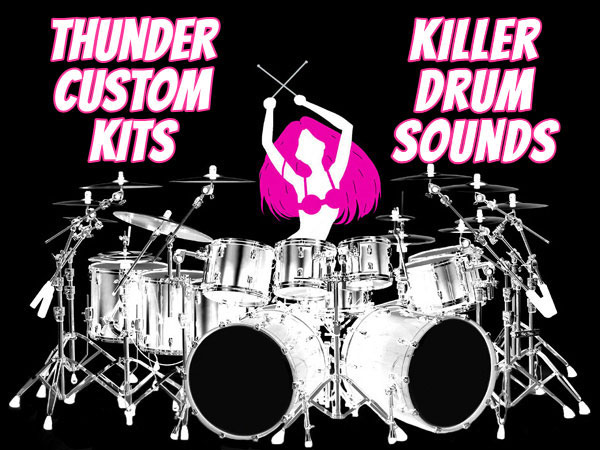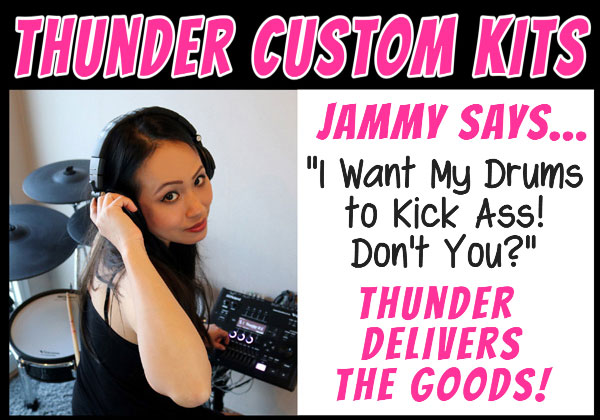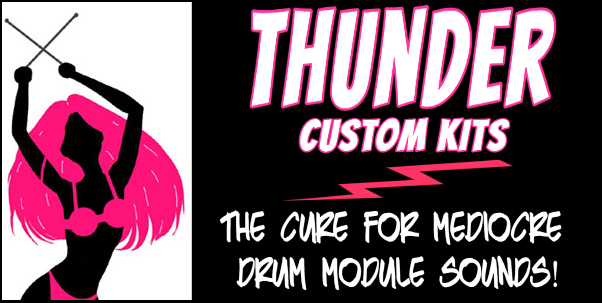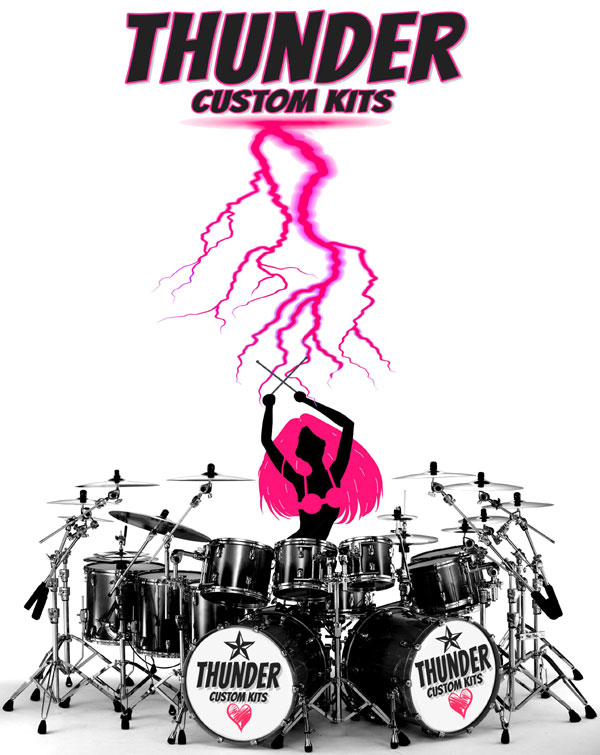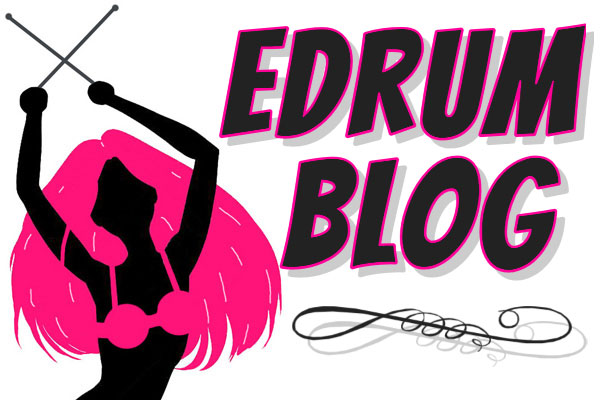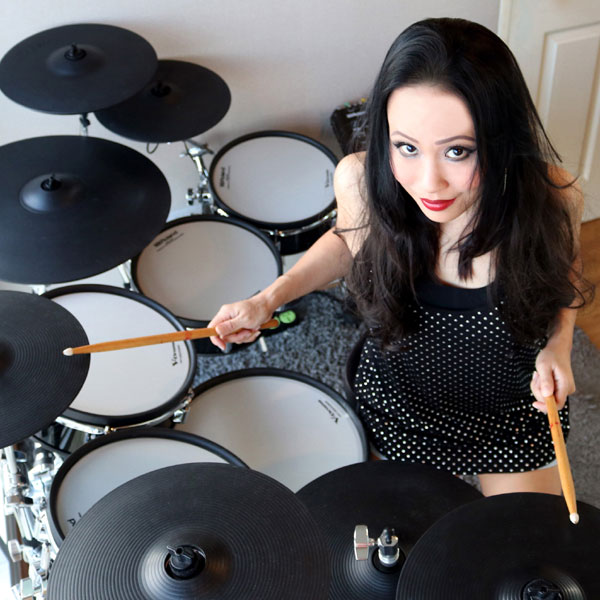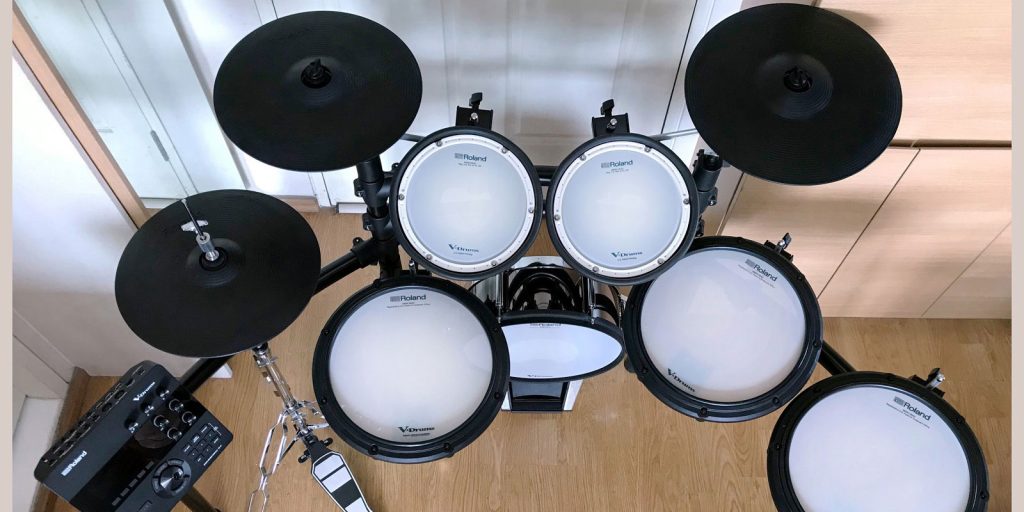
In my opinion, the default edrum trigger sensitivity is too low on virtually every module made in the industry. My opinion is certainly in the minority, since so many drummers love to extol the virtues of the “full range of dynamics” that are possible with modern edrums by using the lowest sensitivity settings. Meanwhile, I routinely encourage MOST users to increase the sensitivity of their triggers mildly to moderately. I look forward to sharing why I feel this way and why I do not fear being in the minority when it comes to my thoughts on sensitivity. If you are a drummer who falls into the “exception to the rule” category (pro jazz musician, for example), then most of this post does not apply to you. If you are one of the 99% of other hobbyist drummers, then it probably does, at least to some degree.
Ok, as a preface, I own an electronic drum shop. A real world drum shop. I have bought and sold thousands of kits over the past 7 years. My experience in the field of edrums is deep. I am not a casual user with experience on 1 or 2 modules in my home music room. I do not have an ego-driven desired to prove “what I have and use” is best. My opinion is not formulated from any company propaganda or preconceived notions about what is right or wrong. Instead, it is based on my solid and extensive experience working with real edrum kits played by real drummers (like ME). Let’s dive in!
Edrum Trigger Sensitivity Explained
Let’s give you some background, so that you understand the concepts being discussed here. Most edrum triggers are capable of producing a range of velocity from 0 to 127, depending on how hard they are hit. Some modules extend this range further than 127, but this is quite irrelevant. Samples in the module will sound at particular velocities. For example, in a given instrument (snare, tom, cymbal) maybe there are 5 samples that will trigger at particular velocities of hits. Milder samples for lower velocity hits and more aggressive samples for higher velocity hits will be played in the module. Additionally, the actual velocity of the hit will also influence how loud or quiet the samples are played, to make more variations than just the 5 samples could provide alone… Hit harder, get a louder, fuller sound. Hit softer, get a shallower, softer sound. Makes sense, right?
It is great that drummers can access 127 levels of velocity (and maybe more). This can be very important for some types of music, especially music with very wide dynamic range, like classical, some types of jazz and some types of ethnic music. However, the vast majority of drummers do not play these types of music primarily and if they do, they dabble in these genres and are certainly not expert enough to derive the full 127 velocity levels purposefully out of the instrument on a regular basis. Most drummers are beginners to intermediates and will never achieve expert level. This is just a fact.
Furthermore, most drummers play pop, rock and various types of mainstream music. Ask any session player what makes a great gigging drummer and they will tell you that it is consistency and the ability to carry the beat. This is primarily important in the world of modern mainstream, pop, rock and metal music. Drummers in these genres tend to use an extremely limited range of dynamics, primarily keeping the pulse of the music and using small fills to show that dynamics exist in their playing. In fact, if a drummer chooses to make a song too dynamic in most music styles, they will be quickly replaced in the lineup or have their work compressed heavily by the sound engineer to make their drumming more consistent. Just look at the virtually universal use of heavy compression on drums in the recording industry for proof of this fact.
Solid drummers, live or recording, play relatively consistently in most music styles or limit the dynamic range on most recordings to suit the mainstream ear of the audience. People want to dance to music, and for this to happen, they require a solid pulse. Need more evidence, just look at the ever-increasing use of electronics in music, especially when it comes to drums. The majority of top 40 music uses drum machines or synthesizers, instead of actual drums or drummers. Those songs that do use human drummers often have them triggering samples or programming, rather than playing actual drums.
Ok, here are my thoughts on default trigger sensitivity. Let’s begin to get back to the original topic here… Lol!
Make Your Edrums Sound Better!
Out of the box, edrums come with the default 0-127 dynamic range assigned to the triggers. The idea is that if you hit the softest possible, you can trigger a velocity 1 hit, while if you hit your hardest, you will trigger a 127 hit. These velocities will in turn trigger a specific sample in the module, as detailed above. The problem is that most drummers will never use the softest hits in any practical application in the music they actually play. Exponentially more importantly, they will hit hard, especially if they play more aggressive music, much more often.
Most drummers will want to access the fullest and best sounds from their module. These sounds tend to fall in the upper velocity range when it comes to popular music. If you are playing time to ACDC, for example, you do not want a snare and kick at velocities of 50, 60 or 70. These sounds will be thin and will not fill up the music as the drums were intended to do. Instead, the optimal velocity for these hits would range be 100 to 110. Pop music with a solid beat is similar, with most time being kept between snare and kick being measured at around 90 to 110 velocity, with just a bit more range for powerful fills, if needed.
So, how does this relate to default sensitivity of edrum triggers? It’s obvious. If you are playing “normally” (not too hard or too soft), then the sounds you are getting from your module might be much too thin for most of the music you are actually playing! In order to compensate, you end up playing harder, which is the direct cause of both injuries (carpal tunnel, tendonitis, RSI) and damage to your gear. Edrums can handle abuse, but why dish it out if you do not need to? By playing hard, you are also deteriorating your technique and compromising your speed and accuracy. Play with technique and with measured violence and you will play longer, better and with less expense to your health and equipment.
If you raise the default trigger sensitivity, now you can access the range of velocities you actually use much easier. Your soft hits will still be soft. However, your normal hits will access more aggressive samples in the module and produce a fuller sound, with less effort and less damage to you and your kit. Play normally and still get a great sound on every beat. This is the reason why you would want to increase your trigger sensitivities to some degree. Here is where I get the argument from many “experts” about reducing their dynamic range, etc. Then they play and demonstrate virtually NO dynamic range. There is nothing wrong with this, per se. Most drummers use a very limited dynamic range, as mentioned above, and this is the INDUSTRY STANDARD for most types of music. It’s ok to admit it and even EMBRACE IT. IMHO, the most outspoken critics of the idea are actually the VERY WORST drummers with little skill or hope to ever attain it! Lol. Pros know the score already and are onboard, because they want to get paid. LOL!
Furthermore, many, many drummers buy edrums for low volume scenarios. They need a low volume solution to play at home, such as living in a condo, on an upper floor, in a dorm, etc. Maybe they need a low volume kit for their actual performances, like in church, theatre or small venue. They want to be able to play as satisfyingly as possible while simultaneously making as little acoustic noise as possible. Right? Well, then play softer and increase the trigger sensitivity to make up for the reduced physical effort. The drums will sound huge in the headphones (and/or in the mix) and be very satisfying.
Fixing the Problem of Thin Edrum Sounds
Ok, so here are some final thoughts, because I could talk about this for days. LOL. When I discuss this topic with drummers, they tend to argue and disagree. So, I changed my approach. When I hear complaints from customers about the mediocrity of module kits and sounds, I suggest giving me a couple of minutes to “check their settings”. I simply bump up the trigger sensitivity and then ask them to go home and let me know how the module plays now. Universally, they report that “I am their savior” and that there module “now sounds great”. They never question what I did, since they do not know. All they realize is the effect the change has and that effect is a larger, fuller, more satisfying sound and presence with less effort and acoustic noise. I have solved the issues of countless customers doing this over the past 7 years. I have NEVER had a single complaint.
For those who are asking the common question, “Why not just raise the volume of the kits or individual instruments?” Here is your answer: This is NOT a volume issue. It is a velocity issue linked to assigned samples at different velocities. Raising the volume, but keeping the sensitivity too low, will simply play the softer, thinner sounding samples louder. Complete crap! You do not want louder. You want fuller and more powerful sounds. Keep the volumes right where they are and increase the sensitivity to fix this problem. I hope you understand this concept, If not, then this entire blog post is probably going way over your head anyway. LOL!
How much should you raise the sensitivity? Well, that depends on many factors. There are no rules. Different modules react differently and some modules now have built in velocity curves for ALL triggers, as an additional option. Here is my usual approach based on tracking the velocity of normal hits on the triggers in question:
Snares are usually pretty close. I tend to raise them maybe +1.
Toms are similar and usually only need a +1 boost.
Ride, hats and crashes vary by module. Sometimes a +1 boost is enough (+2 or +3 in rare cases).
I always increase the kick drum sensitivity considerably. Most normal kick hits register 60 to 80 range and are disproportionate to other pad hits which may register 20 to 40 higher, on average. I tend to boost the kick +4 to +6, depending on pad and module, until the kick samples become full and punchy as a rule, rather than an exception.
Of course, there are other drum trigger settings that I tweak to make the sound optimal, but these are not related to sensitivity. (Ok, 1 bonus tip… ALWAYS increase the rim/edge gain on crash (if not all) cymbals to AT LEAST 1. Tiny change, big results!) I have never heard a bow hit that is louder than an edge crash on an acoustic cymbal, but almost every module manufacturer places the edge at .7 or .8 compared to the bow. WTF??? Speaking of neutering your cymbal sounds…
Edrum Trigger Sensitivity is Too Low in Summation
Ok, so that’s it. Those are my thoughts. Try it or don’t. It’s up to you. It’s a free life. If you are super confident in your choices, then reading this might have been a waste for you. If you are Neil Peart reincarnated and know everything already, then you definitely wasted your time. If you want to argue, go ahead and knock yourself out. Argue until you are blue in the face. When you run your own edrum shop, you can given any advice that YOU want! Until then, shut the front door! Lol…
BUT, if you are the “typical edrummer” and could use some pointers to give you a better experience, as well as more longevity from your body and your gear, then this is something you should try out for yourself. These are my normal customers, amounting to thousands a year. I speak from experience here and know that this approach works well for most of these drummers. What do you think of the solutions presented herein?
PS: My edrum shop is @bangkokdrum

